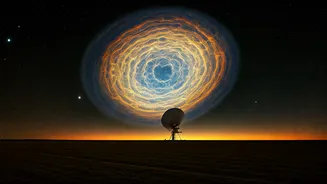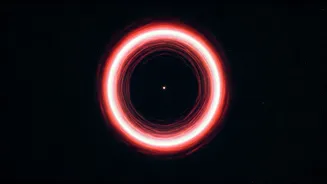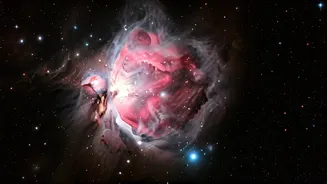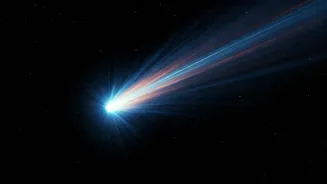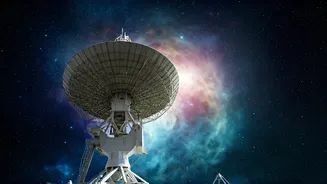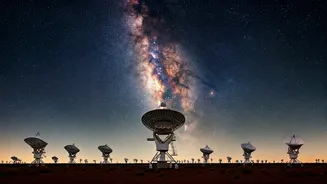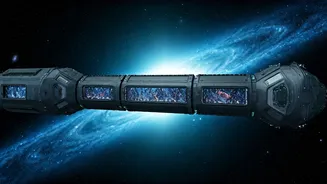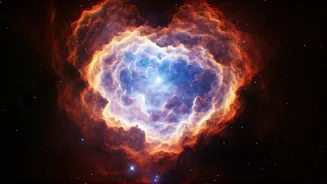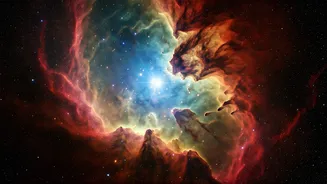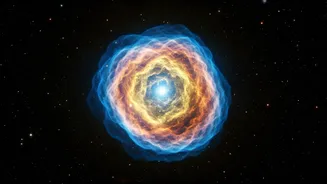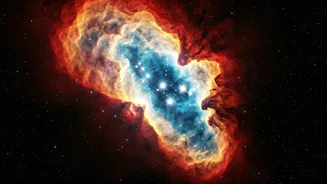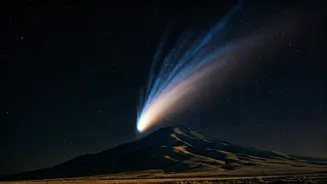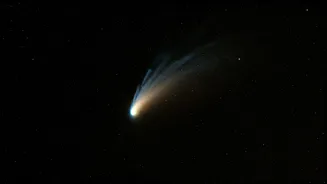Mapping the Cosmos
The Murchison Widefield Array (MWA) plays a crucial role in creating the radio map. Situated in Western Australia, the MWA is a low-frequency radio telescope.
Its design enables it to capture the faint radio signals emitted by the early universe, specifically those from the Epoch of Reionization. This era, which occurred approximately 13 billion years ago, marks a pivotal moment in cosmic history as the first stars and galaxies began to illuminate the universe, ionizing the neutral hydrogen that filled space. The MWA's extensive field of view and sensitivity are vital for observing this faint signal, which is significantly weaker than other radio sources. The researchers meticulously analyze data, filtering out terrestrial radio interference and other sources of noise. The resulting map offers unprecedented clarity, allowing astronomers to study cosmic evolution in more detail than ever before. This includes understanding the structure and distribution of early galaxies and the interplay of fundamental physical processes.
Unveiling Reionization
A primary objective of the MWA project is to comprehend the Epoch of Reionization. This epoch is a critical period when the first stars and galaxies began to form and emit light. These early sources of radiation ionized the neutral hydrogen atoms that permeated the early universe. This process is essentially a phase transition, transforming the universe from a dark, opaque state to a transparent, ionized one. The newly created radio map provides scientists with essential insights into the characteristics of this period. By analyzing the fluctuations in the 21-centimeter signal from neutral hydrogen, researchers can map the distribution of neutral and ionized gas. This information allows for a reconstruction of the structure and evolution of the first galaxies and understanding the effects they had on the intergalactic medium. The map allows scientists to study the intensity and distribution of the 21-centimeter signal from neutral hydrogen, providing insights into the distribution of neutral and ionized gas in the early universe, and helping to understand how the first stars and galaxies formed.
Advanced Data Analysis
Creating this detailed radio map demands complex data processing and sophisticated analysis techniques. The MWA collects vast amounts of data, which is then refined to extract faint signals from the early universe. The raw data consists of radio signals received from space, mixed with interference from human-made sources and natural phenomena. Sophisticated algorithms are used to remove these sources of noise. Once this filtering is performed, scientists use specialized methods to combine the data to form a comprehensive map. The construction of the radio map involves a deep understanding of radio astronomy and computational techniques. These processes allow the extraction of crucial information about the early universe, including the distribution of hydrogen, the formation of the first stars, and the overall structure of the cosmos during its infancy. This process demonstrates scientists’ capacity for innovative computational astronomy.
Impact of Findings
The radio map generated by the MWA provides a wealth of information that will alter our comprehension of the early universe. The detailed view of the Epoch of Reionization offers an unprecedented look at how the universe evolved after the Big Bang, revealing the structure and formation of the first galaxies and how they influenced the surrounding environment. This enables scientists to refine theories about the universe’s beginning. This work also validates earlier models, or reveals areas needing further investigation. It is a vital tool for verifying current cosmological models. Furthermore, this study paves the way for future astronomical projects. The research inspires future projects in radio astronomy, and emphasizes the significance of continuing to explore the universe's past. The findings reinforce our appreciation of the complexity and beauty of the cosmos.
